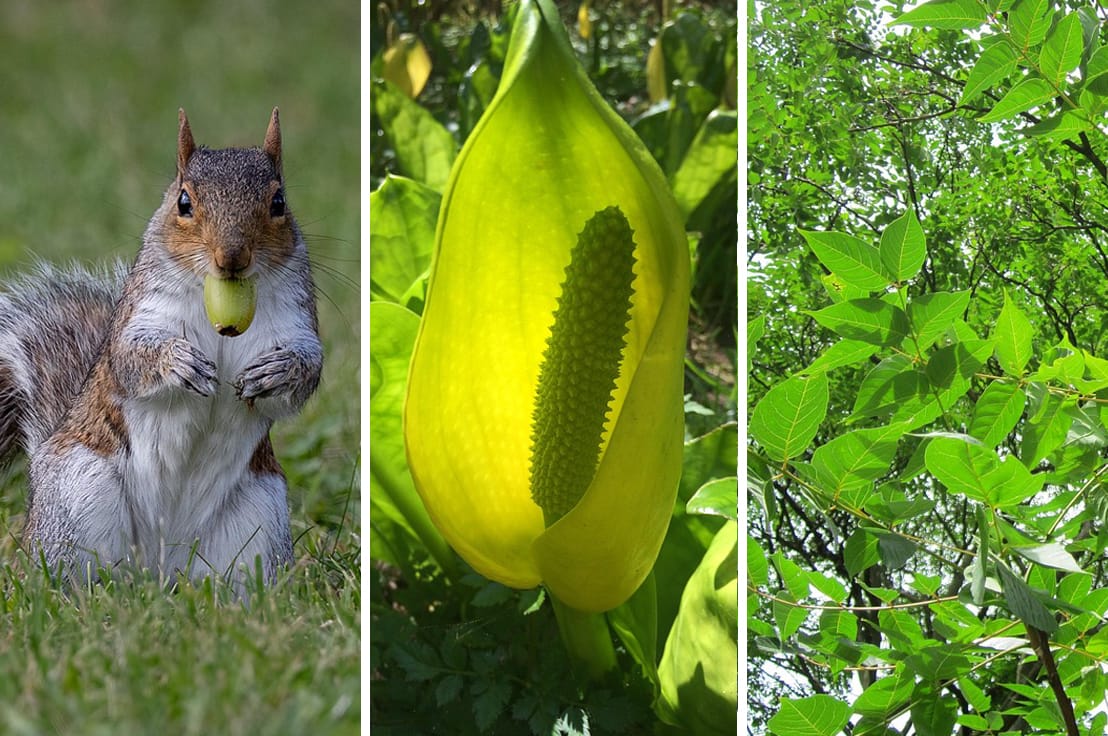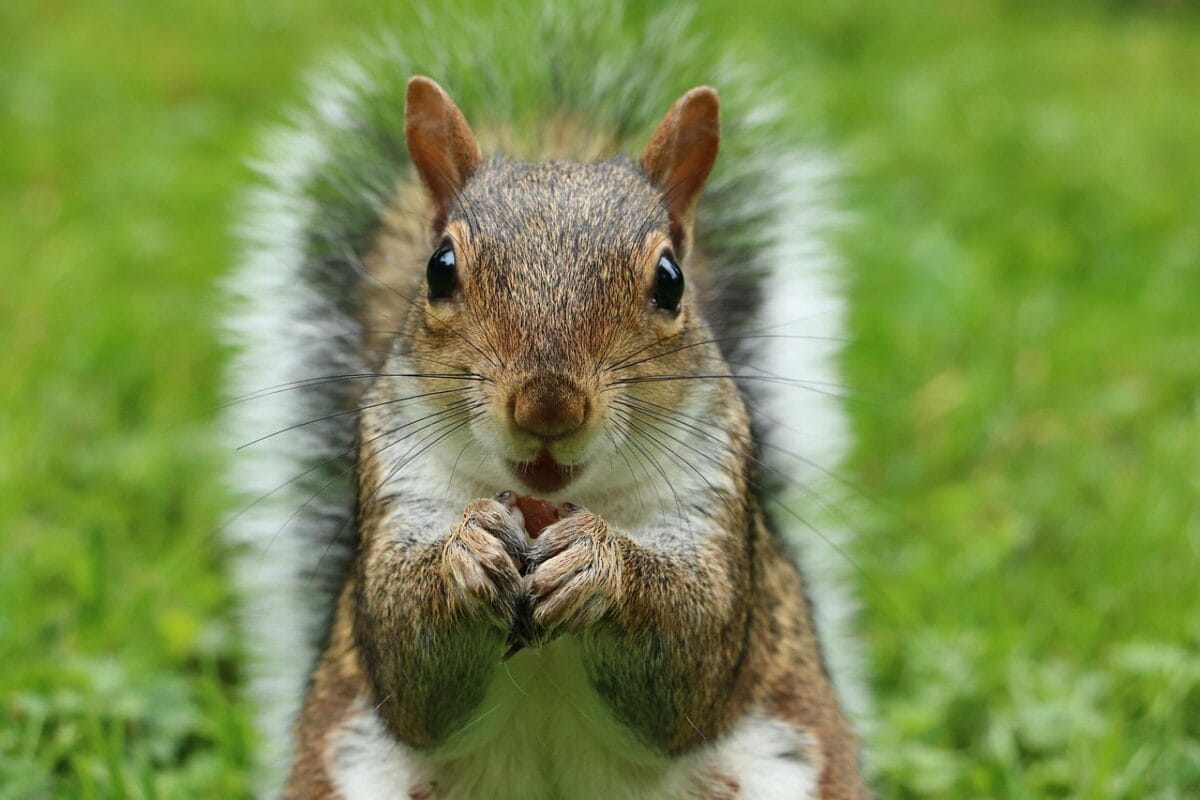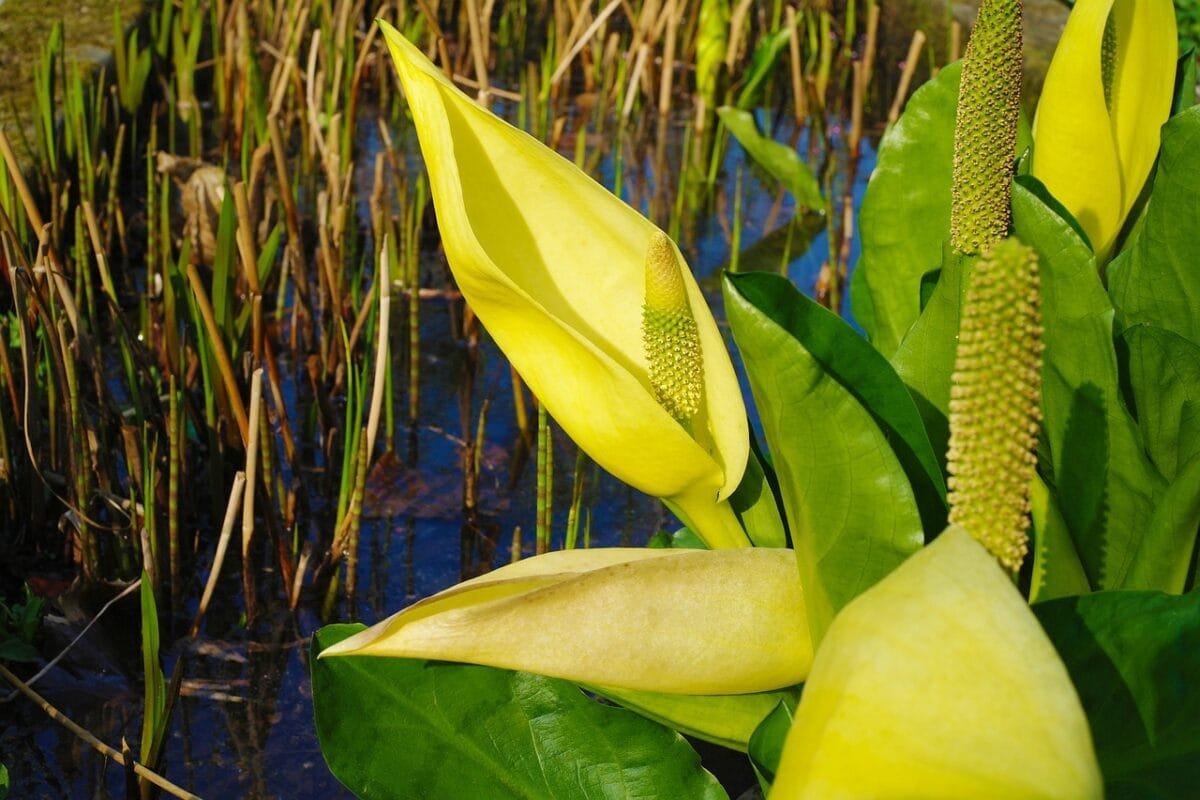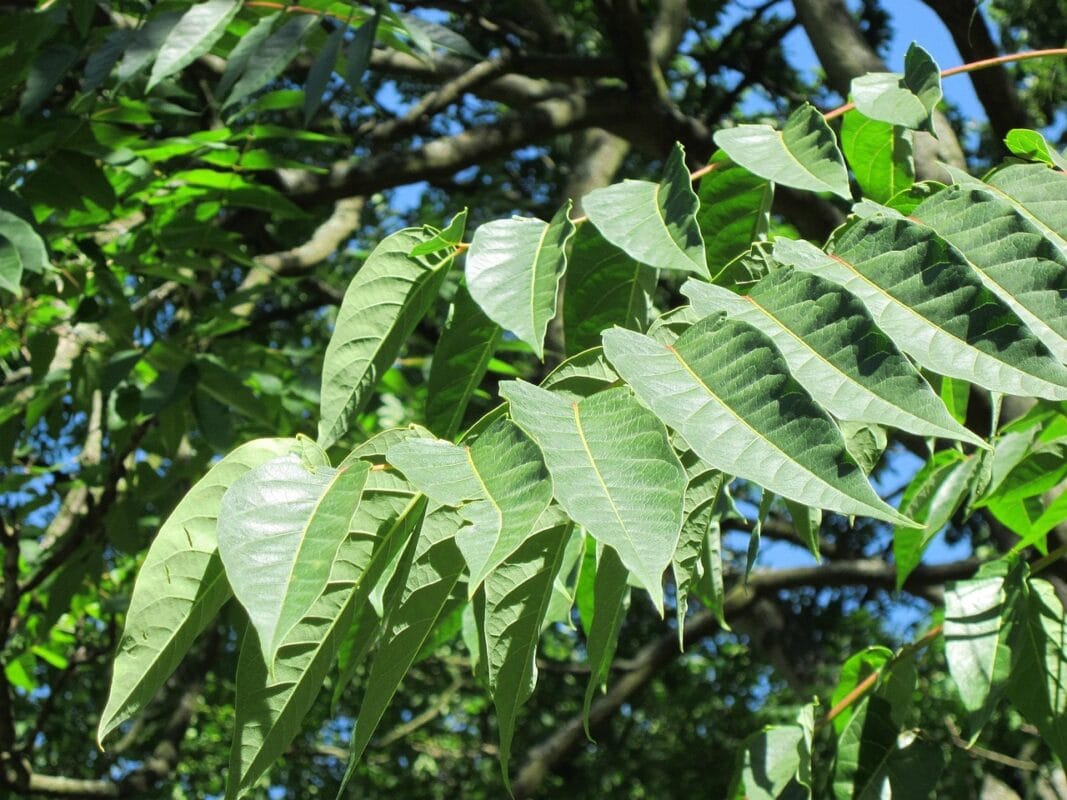
(written by Ric Hampson)
Woodland ecosystems depend on a complex, layered structure, from the towering canopy to the low-lying understory of shrubs, ferns, and wildflowers. This layered habitat supports a remarkable diversity of life. However, invasive non-native species (INNS) increasingly threaten this balance. According to the Woodland Trust, the impacts of INNS costs the UK economy £4 billion per annum.
Tree and Woodland management professionals may be familiar with the problems caused by well-known invasive plant species such as Rhododendron ponticum, Japanese knotweed (Fallopia japonica) and Himalayan balsam (Impatiens glandulifera), however this article will focus on some of the lesser-known (but potentially high-impact) threats facing our woodlands:
🐿️ Grey Squirrels (Sciurus carolinensis);
🌿American Skunk Cabbage (Lysichiton americanus);
🌳Tree of Heaven (Ailanthus altissima)
Without effective management, these species can transform rich woodland habitats into degraded, near-lifeless zones.

Originally introduced from North America in the late 19th century, many people assume Grey squirrels are a cute and harmless addition to the UK’s woodlands, however, as well as outcompeting Britain’s native Red squirrel, they are also a vector for the Squirrelpox virus, causing huge declines in the native red squirrel population since their introduction. It is illegal to introduce Grey squirrels into the wild in the UK.
Aside from spotting a bushy tail poking above a branch, look for sections of the stem or branches where bark has been stripped back, and notice any fresh sections of stripped bark discarded at the base, possibly with little teeth marks in them!
🌳 Bark damage – Stripping bark from broadleaved trees and shrubs which can lead to structural issues, weaken the health of the tree, and possibly reduce the amenity value by rendering it less visually attractive;
🧬 Biodiversity loss – Outcompeting native Red squirrels and other wildlife has lead to a loss in biodiversity;
🌰 Excess seed, bud and nut consumption may reduce natural regeneration capacity of native woodland species (esp. Oak) and may alter woodland composition to favour more resilient species (for example Sycamore over Oak);
🪵 Commercial forestry considerations – Squirrel damage may degrade hardwood and reduce timber values.
Population control efforts can be coordinated with stakeholders, for example via the National Squirrel Accord, to try to control or reduce numbers.

Introduced to the UK from its native range in western North America in the 19th century, this ornamental plant is now widely naturalised and has been listed under section 9 of the Wildlife & Countryside act as illegal to plant. It favours habitats with frequently waterlogged soils; so Wet woodlands, riparian zones and fens/marshland are particularly susceptible.
Flowers emerge early in Spring, (before many native wetland species) thus making it easier to detect in these habitats. Look for large yellow hood-like flowers with a fleshy central spadix and notice a strong, skunk-like odour, especially distinctive during warm weather
🌿 Suppresses native ground flora by outcompeting and reducing light availability along with competing for nutrients in the soil;
🌊 Dense roots systems can trap sediment and disrupt drainage, which can easily degrade fragile habitats and lead to hypoxic soil conditions;
🪻 Species-rich wetlands may suffer large scale loss in plant biodiversity;
🌾 Produces large quantities of highly viable seeds, with effective long-range dispersal mechanisms leading to the formation of persistent seed-banks, making it harder to eradicate.
🛠️ Uprooting the plants and removing seedbanks, although manually intensive, can be an effective removal strategy;
🚫 Strong biosecurity controls can help to limit the spread.

Introduced to the UK in 1751 after a French priest visited its native China and returned to Europe with seeds to distribute, it has now naturalised across much of southern England. It is considered an invasive species due to its aggressive growth rates and ability to out-compete native species. The Tree of Heaven is particularly adept at colonising open areas or woodland gaps and so is more likely to be found in urban areas or brownfield sites, along transport corridors or woodland edges and areas that have been felled for regeneration.
A fast-growing tree with unusually large compound leaves and a strong odour when crushed, along with dense thickets of identical clones (from suckering).
🌳 Fast growth rates cause dense canopy creation, which crowds out native saplings and ground flora and degrades woodland structure;
🌱 Allelopathic properties inhibit growth of surrounding vegetation and increase likelihood of a monoculture developing;
🌿 Aggressive root suckering leads to rapid spread and the creation of dense clonal colonies, reducing biodiversity and further degrading habitats.
Repeated treatments by herbicide can offer potential management solutions, however, the environmental consequences my not be worth it.
For expert advice on any arboricultural matter, contact our team at tep@tep.uk.com, we’re always happy to help.








